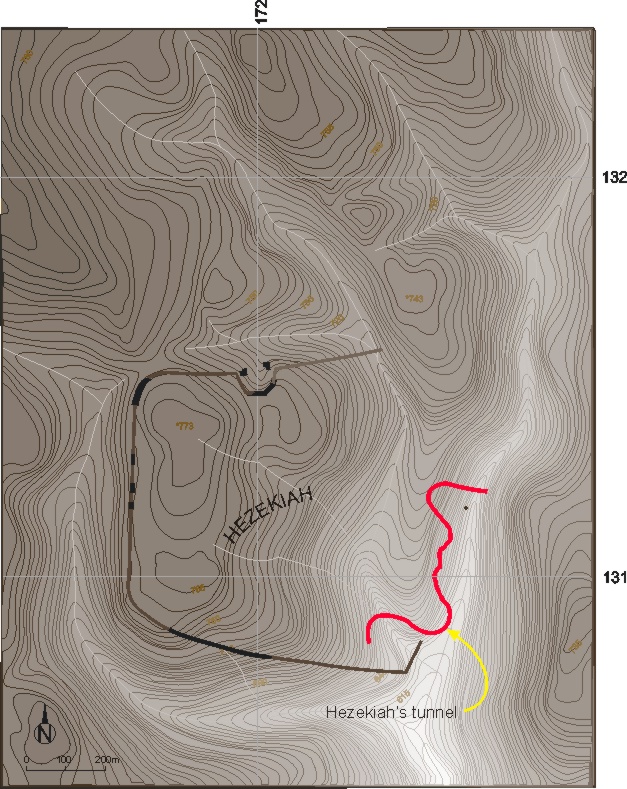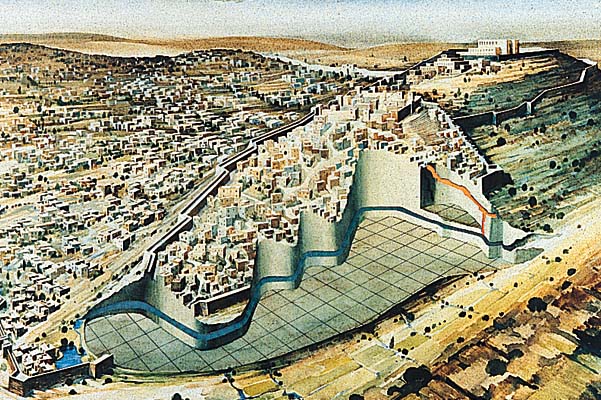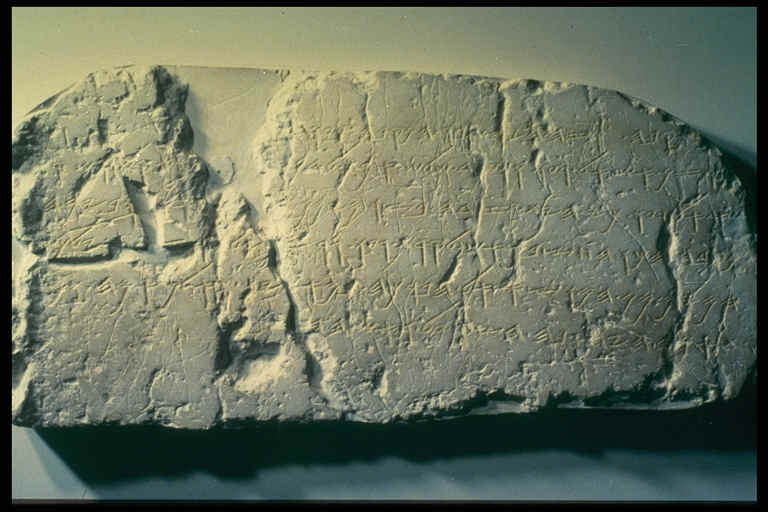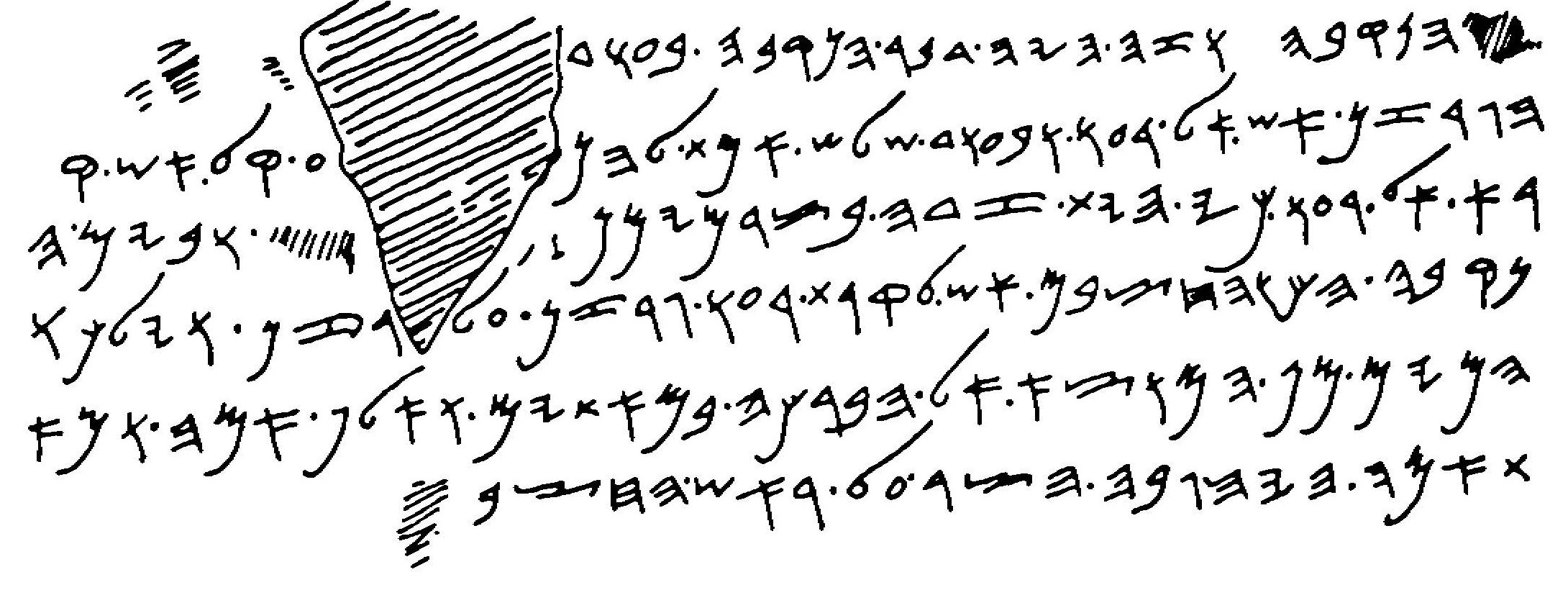







Fortification did little to secure a city if its supply of water was vulnerable. Hezekiah undertook to secure Jerusalem's water supply by boring a tunnel 1,748 ft. through bedrock from the Gihon Spring in the Kidron Valley, under the City of David to feed a pool situated in the NW corner of the city, inside the walls. We know of the pool as the Pool of Siloam. The feat is all the more amazing because the miners began boring from both ends simultaneously. When the tunnel was completed, the Gihon Spring was sealed up from the outside and the water flowed by gravity to the pool.
From the time the inscription was first discovered in 1880, its beginning was already lost. Subsequently, the inscription was carved away and stolen by vandals. When it was recovered, it had sustained further damage.
"The inscription is now in the Museum of the Ancient Orient at Istanbul. Its six lines occupy the lower half of a prepared surface, the upper part of which was found bare of inscription. It is, accordingly almost certain that the first half of the original document is missing. Its contents and script point to the reign of Hezekiah (about 715-687 B.C.), a dating confirmed by II Kings 20:20 and especially II Chron. 32:30."
[...when] (the tunnel) was driven through. And this was the way in which it was cut through:--While [...] (were) still [...] axe(s), each man toward his fellow, and while there were still three cubits to be cut through, [there was heard] the voice of a man calling to his fellow, for there was an overlap in the rock on the right [and on the left]. And when the tunnel was driven through, the quarrymen hewed (the rock), each man toward his fellow, axe against axe; and the water flowed from the spring toward the reservoir for 1,200 cubits, and the height of the rock above the head(s) of the quarrymen was 100 cubits.